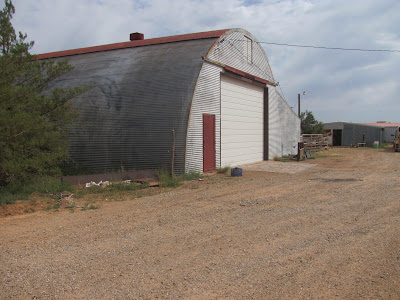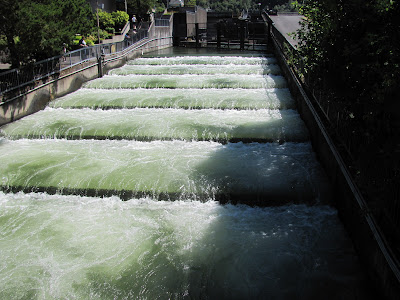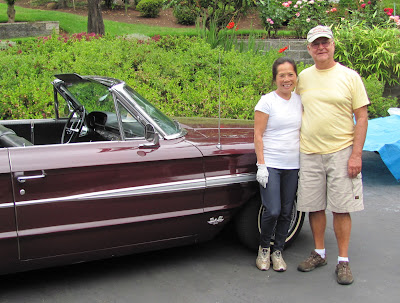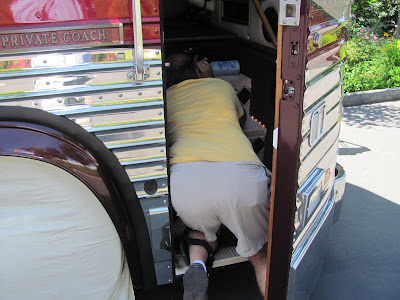Clovis, New Mexico is a very, very dry country and life only exists because of water. Water is the life blood of existence in this land. Farms must be irrigated or they simply will not exist.
The Edwards farm is a piece of history that proves success from genuine human spirit. The original "home place" is currently owned by what one would easily call "a New Mexico Cowboy". It was great meeting the current owner and chatting with him and his son. Our only regret is we wished we had more time to mingle with these guys. These guys are definitely living the New Mexico Cowboy Way.
The farm buildings were scattered across approximately 15 acres (the old home place is owned by Donnie and the farm land by Edwards) with buildings for machinery repair, storage and cattle pens. Used farm equipment was stored at various locations on the property. Nothing goes to waste is a farming operation. (You never know where that next needed machinery part will come from.) The "sweet smell" of cattle barns was in the air as we walked around the property.
The ranch buildings are surrounded by circle irrigated farms. Corn was the main crop we noticed. However, green beans and spinach have been grown as well. While driving through the town of Clovis, we noticed pickup trucks were the main vehicle of choice. Plus, opened rolls of barbed wire, shovels, hay, cattle feed and dogs were tools being carried in the pickup beds.
It was truly a step into America's cattle country, with pickup trucks being used, instead of horses and Wal-Mart visited instead of the general store for supplies. Cattle was also part of the daily activity. Cattle is purchased and allowed to graze the fields at various parts of growing crops. These fattened cattle are then sold for profit. Income from the use of land is maximized.
My finial comment is ranching and farming is hard work! These guys are committed to live a life of hard work to generate income from their land. I am sure that after a long work day in a dry dusty field or following a herd of cattle stirring talc powder fine dust, the romance of the cowboy way is deminished. However, a clear "value added life" is seen for growing and living life in this environment. I certainly "tip my hat" to these guys.
Lee and I very appreciative for the genuine hospitality of the current owners sharing a small "snippet" of their lifestyle with us "Texas Drugstore Cowboys". We will always remember our brief stop at the Edwards Farm and visiting with Donnie and Chad in Clovis New, Mexico.
(Click on pictures for enlarged view)
Welcome to New Mexico Sign. Notice the beautiful mountain range in the background.
At the farm, Jaycee and XXXXX pose with their pup.
XXXX was wearing his championship roping belt buckle. He and his dad are rodeo roping competitors. We were definitely in cowboy country.
The long barn. This barn is adjacent to the cattle pens.
Picture of the ranch taken in 2007.
Picture of the ranch taken when purchased by Donnie.
Donnie in his ranch office. The office was loaded with memobilia.
Cowboy memoribillia.
This is a saddle won by Donnie and XXXX for their championship roping.
Check out the video clip we filmed while on the property. We loved being there and appreciate the genuine hospitality.
























































